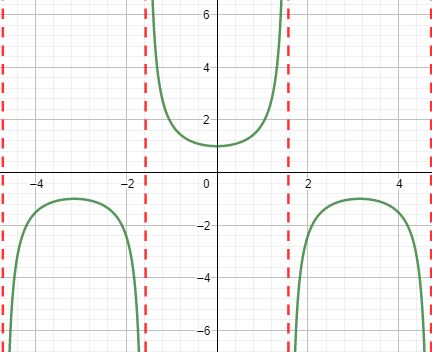
What is an investment quality bond? This is a security which is issued in $1,000 increments. It has lower risk than stock. Companies with strong balance sheets can also issue it. These bonds are less risky than stocks and offer lower returns, but they also provide a safer investment option than the wider market. Below are some characteristics to look for when choosing an investment grade bond. Here are some characteristics you should look for in an investment grade bonds. These characteristics should be easy to identify if you are interested in this investment option.
Stocks are more risky than investment grade bonds.
There are two types, investment grade and noninvestment grade, of bonds. BBB-rated bonds are investment grade. High-yield bonds carry higher risks than low-credit quality bonds. Higher interest rates are paid on investment grade bonds than those with higher yields, and they are generally less risky. These bonds are often used to finance ambitious property developers and young technology firms. This type of bond is less risky than stocks.
Similar classifications can be applied to government bonds. For example, US government debt can be rated investment grade and Venezuelan debt high-yield. To determine which bonds are best for institutional investors, they must be able to distinguish the two types. Hong Kong's Mandatory Prevent Fund has two constituents. The conservative one is more inclined to lower-risk assets and the aggressive one is more aggressive.

They offer lower returns
While investing in investment-grade bonds is safe, the return is typically lower than other types. Because they are less likely to default, these bonds are safer investments. Investors are more willing to accept lower returns if there is a low risk of defaulting. This article explains the differences in high yield bonds and investment-grade bonds. It is useful to compare the credit ratings of these securities and their risk assessments in order to understand the differences.
These securities have become more risky for investors as interest rates increased over recent years. Because traditional fixed income asset types have low yields and are sensitive to interest rate risk, they have often performed poorly. Fixed income strategies that target below-investment quality credit have proven to be more stable as rates rise. These strategies are typically shorter in duration and offer higher yields.
They come in 1,000-unit increments
An investment grade bond refers to a debt security that is issued by a corporation. These bonds can be sold in blocks up to $1,000 in face value. They typically have a fixed interest rate as well as a maturity date. An investment bank usually assists corporate issuers in underwriting and marketing bond offerings. The issuer pays periodic interest payments to the investor, and they can then reclaim the original face value of the bond at the maturity. Corporate bonds also include call provisions and fixed interest rates.
While most bonds come in $1,000 increments; some are also sold in $500 increments, $10,000 increments or even $100 increments. As bonds are intended to be attractive to institutional investors, the higher the denomination is, the better. The face value is the amount the issuer will pay you when the bond matures. These bonds can either be sold at or above the face value on secondary markets. An investment grade bond's face value is the amount that the issuer promises to pay on its maturity date.

These are issued by companies that have strong balance sheets
These investments have attractive yields, but they also come with greater risk. For example, the possibility that the company may not pay its investment back or fulfill its interest obligations. Bonds are safer than stocks. They are less susceptible to volatility, and they have a greater chance of remaining constant. Bondholders get paid first if the company defaults on its debt. Bondholders can get back their investments much quicker than stockholders, provided they sell the bonds prior to the company defaults.
Companies that have strong financial records and a solid balance sheet are more likely to issue investment-grade bonds. The most common type of investment-grade bonds is revenue bonds. These bonds are backed with a specific source income. On the other hand, mortgage-backed securities are backed with real estate loans. Both types of investment grade bonds are subject to different risks. For example, Treasury bills mature in 52 weeks. They do not pay coupons, but rather pay their full face value at maturity. Likewise, Treasury notes mature in two, three, five, or ten years. They also pay interest every six month.
FAQ
How are securities traded
The stock exchange is a place where investors can buy shares of companies in return for money. Companies issue shares to raise capital by selling them to investors. Investors then sell these shares back to the company when they decide to profit from owning the company's assets.
Supply and Demand determine the price at which stocks trade in open market. The price of stocks goes up if there are less buyers than sellers. Conversely, if there are more sellers than buyers, prices will fall.
There are two ways to trade stocks.
-
Directly from the company
-
Through a broker
What is a bond and how do you define it?
A bond agreement between two parties where money changes hands for goods and services. It is also known simply as a contract.
A bond is usually written on a piece of paper and signed by both sides. The document contains details such as the date, amount owed, interest rate, etc.
The bond is used for risks such as the possibility of a business failing or someone breaking a promise.
Bonds are often combined with other types, such as mortgages. This means the borrower must repay the loan as well as any interest.
Bonds can also raise money to finance large projects like the building of bridges and roads or hospitals.
It becomes due once a bond matures. When a bond matures, the owner receives the principal amount and any interest.
Lenders can lose their money if they fail to pay back a bond.
What is an REIT?
A real-estate investment trust (REIT), a company that owns income-producing assets such as shopping centers, office buildings and hotels, industrial parks, and other buildings is called a REIT. These publicly traded companies pay dividends rather than paying corporate taxes.
They are similar companies, but they own only property and do not manufacture goods.
How does Inflation affect the Stock Market?
Inflation affects the stock markets because investors must pay more each year to buy goods and services. As prices rise, stocks fall. Stocks fall as a result.
Statistics
- Individuals with very limited financial experience are either terrified by horror stories of average investors losing 50% of their portfolio value or are beguiled by "hot tips" that bear the promise of huge rewards but seldom pay off. (investopedia.com)
- For instance, an individual or entity that owns 100,000 shares of a company with one million outstanding shares would have a 10% ownership stake. (investopedia.com)
- Our focus on Main Street investors reflects the fact that American households own $38 trillion worth of equities, more than 59 percent of the U.S. equity market either directly or indirectly through mutual funds, retirement accounts, and other investments. (sec.gov)
- Even if you find talent for trading stocks, allocating more than 10% of your portfolio to an individual stock can expose your savings to too much volatility. (nerdwallet.com)
External Links
How To
How to Open a Trading Account
First, open a brokerage account. There are many brokers that provide different services. There are many brokers that charge fees and others that don't. Etrade, TD Ameritrade Fidelity Schwab Scottrade Interactive Brokers are some of the most popular brokerages.
After you have opened an account, choose the type of account that you wish to open. You should choose one of these options:
-
Individual Retirement accounts (IRAs)
-
Roth Individual Retirement Accounts
-
401(k)s
-
403(b)s
-
SIMPLE IRAs
-
SEP IRAs
-
SIMPLE 401(k).
Each option comes with its own set of benefits. IRA accounts offer tax advantages, but they require more paperwork than the other options. Roth IRAs permit investors to deduct contributions out of their taxable income. However these funds cannot be used for withdrawals. SIMPLE IRAs have SEP IRAs. However, they can also be funded by employer matching dollars. SIMPLE IRAs are simple to set-up and very easy to use. They allow employees to contribute pre-tax dollars and receive matching contributions from employers.
Finally, determine how much capital you would like to invest. This is also known as your first deposit. A majority of brokers will offer you a range depending on the return you desire. Based on your desired return, you could receive between $5,000 and $10,000. This range includes a conservative approach and a risky one.
After deciding on the type of account you want, you need to decide how much money you want to be invested. There are minimum investment amounts for each broker. The minimum amounts you must invest vary among brokers. Make sure to check with each broker.
After you've decided the type and amount of money that you want to put into an account, you will need to find a broker. Before you choose a broker, consider the following:
-
Fees – Make sure the fee structure is clear and affordable. Brokers often try to conceal fees by offering rebates and free trades. However, some brokers charge more for your first trade. Don't fall for brokers that try to make you pay more fees.
-
Customer service – You want customer service representatives who know their products well and can quickly answer your questions.
-
Security - Make sure you choose a broker that offers security features such multi-signature technology, two-factor authentication, and other.
-
Mobile apps - Make sure you check if your broker has mobile apps that allow you to access your portfolio from anywhere with your smartphone.
-
Social media presence: Find out if the broker has a social media presence. If they don't, then it might be time to move on.
-
Technology - Does the broker use cutting-edge technology? Is the trading platform intuitive? Are there any glitches when using the system?
Once you have selected a broker to work with, you need an account. Some brokers offer free trials. Other brokers charge a small fee for you to get started. After signing up, you'll need to confirm your email address, phone number, and password. Next, you'll have to give personal information such your name, date and social security numbers. Finally, you will need to prove that you are who you say they are.
Once verified, your new brokerage firm will begin sending you emails. These emails will contain important information about the account. It is crucial that you read them carefully. These emails will inform you about the assets that you can sell and which types of transactions you have available. You also learn the fees involved. Also, keep track of any special promotions that your broker sends out. These could include referral bonuses, contests, or even free trades!
The next step is to create an online bank account. Opening an account online is normally done via a third-party website, such as TradeStation. These websites are excellent resources for beginners. To open an account, you will typically need to give your full name and address. You may also need to include your phone number, email address, and telephone number. After all this information is submitted, an activation code will be sent to you. To log in to your account or complete the process, use this code.
After opening an account, it's time to invest!